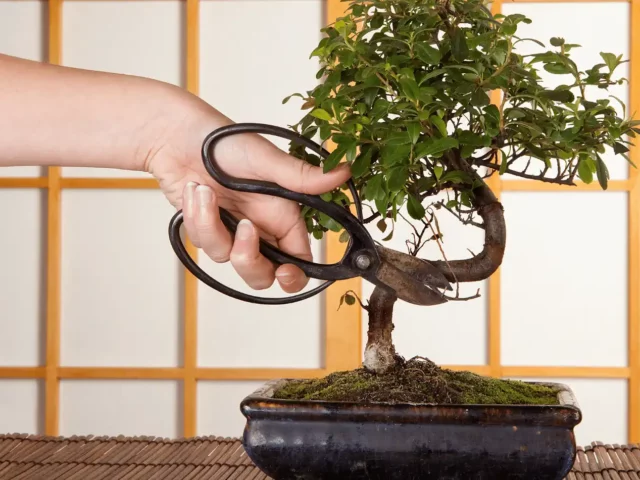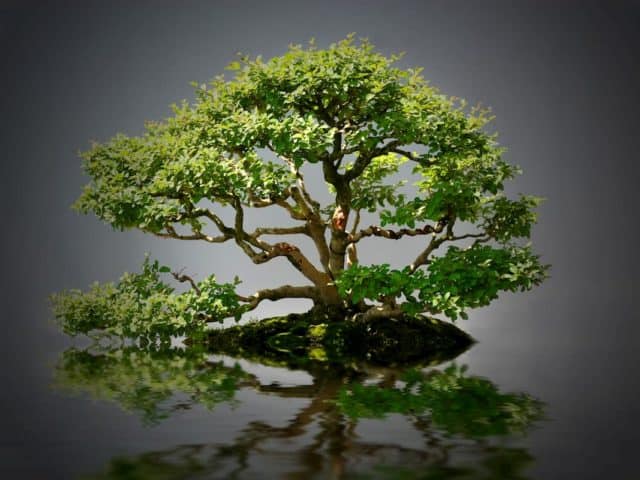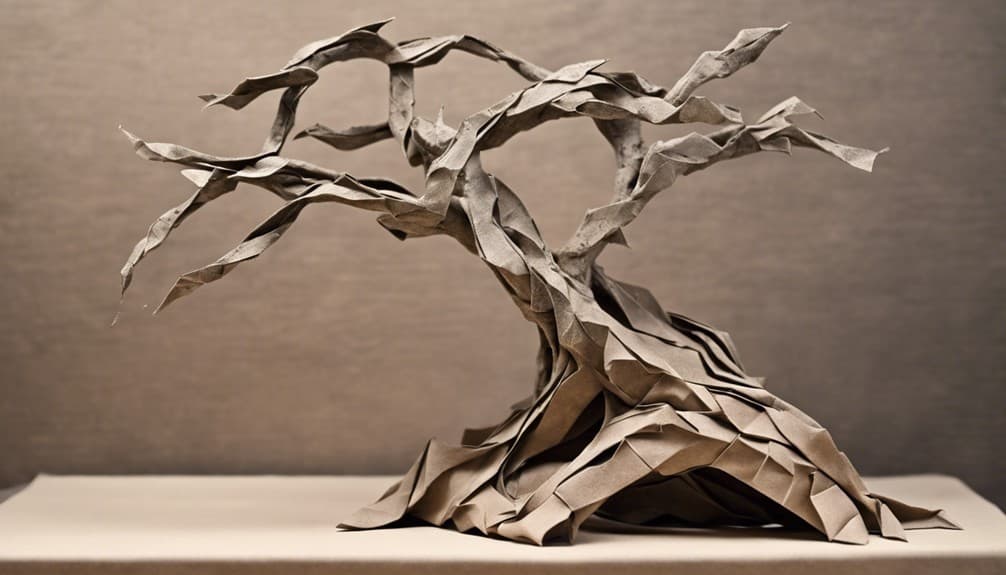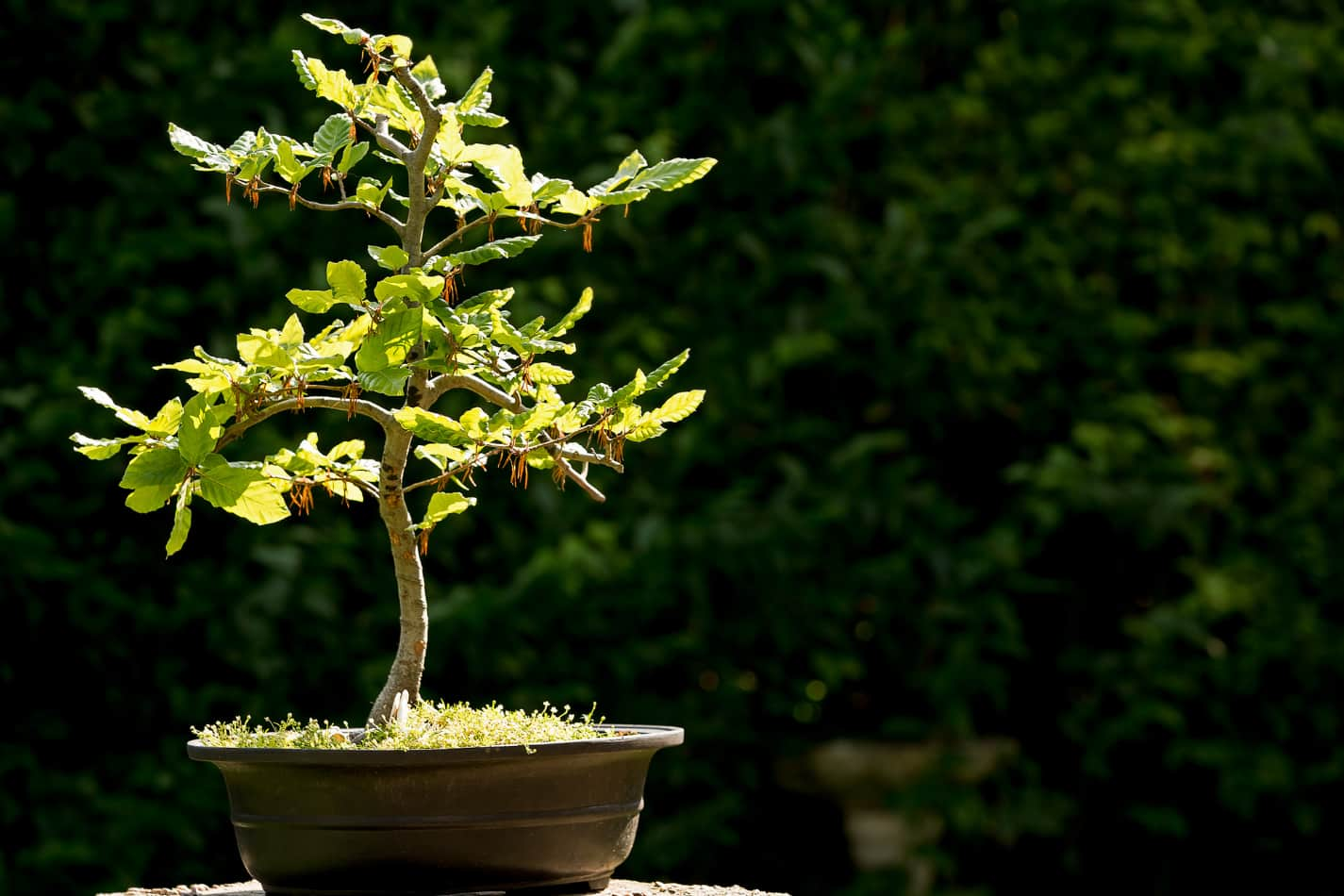Have you ever marveled at the meticulous craftsmanship behind the art of bonsai and wondered what tools make such precision possible?
Bonsai shears are the unsung heroes in this delicate dance of snipping and shaping. These specialized scissors are tailored for various tasks, from trimming tiny buds to cutting through thicker branches, each designed to maintain the plant’s health and aesthetic appeal.
With options in size and material, such as stainless and carbon steel, the choice of shears can significantly impact your bonsai’s growth and beauty. But how do you select the right pair for your needs?
Stick around, and let’s explore the nuances that could elevate your bonsai journey to the next level.
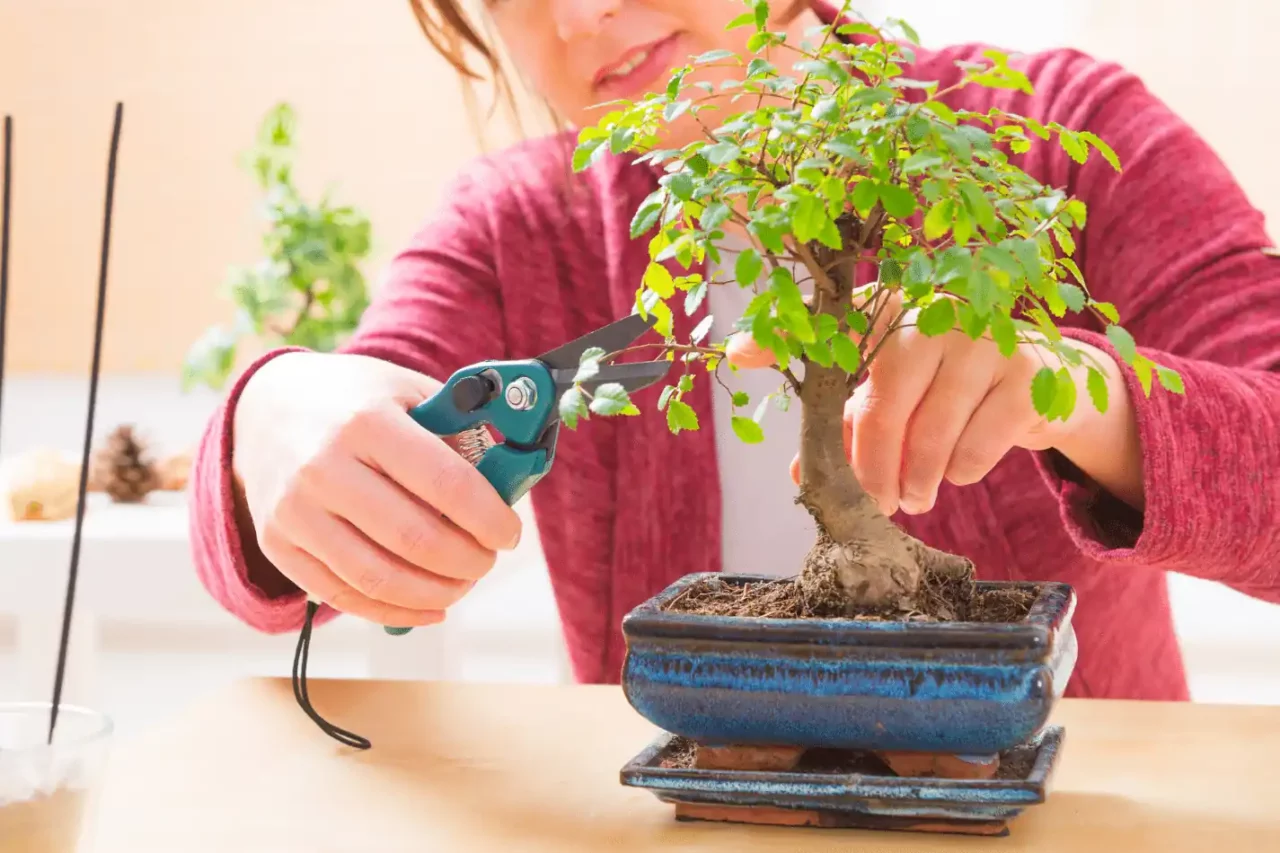
Key Takeaways
- Bonsai shears are specialized tools designed for pruning and shaping bonsai trees.
- They come in various sizes and types, such as Ashinaga, Satsuki, and Okubo shears, to cater to different pruning needs.
- The material of the shears, typically stainless or carbon steel, affects their durability, sharpness, and performance.
- Proper selection of bonsai shears is crucial for the health, growth, and aesthetic appeal of bonsai trees.
Understanding Bonsai Shears
Bonsai shears, specialized tools crafted for the meticulous task of pruning and shaping bonsai trees, are indispensable in achieving both the aesthetic appeal and health of these miniature landscapes.
With precision at their core, these shears come in various sizes and shapes, each designed to cater to different trimming needs and tree sizes. Essential for the regular maintenance that bonsais demand, the right bonsai tool in your hands empowers you to meticulously sculpt, ensuring both vitality and visual harmony.
High-quality bonsai shears, forged from stainless steel or carbon steel, guarantee durability and a sharpness that endures. Embracing the right shears for your bonsai not only elevates its appearance but crucially promotes its overall health, allowing you the freedom to shape these living art forms to your vision.
Types of Bonsai Shears
Navigating the world of bonsai maintenance, you’ll encounter a diverse array of shears, each engineered with specific purposes in mind to cater to your bonsai’s unique needs.
Among these, stainless steel Ashinaga shears, particularly the Ryuga and Kaneshin variants, stand out for intermediate to advanced users, offering unparalleled precision in pruning tasks.
For those at an intermediate level, master grade Satsuki shears are indispensable for detailed work, embodying the pinnacle of types of bonsai scissors.
Okubo shears, on the other hand, are designed for robust cuts, suitable for users across different skill levels.
Beyond these, specialized tools like mini butterfly branch cutters and retractable bonsai saws complement the essential shears, broadening the horizons for bonsai enthusiasts seeking to refine their art with precision and freedom.
Size Matters in Pruning
Understanding the significance of size in selecting bonsai shears is paramount for achieving precise and efficient pruning outcomes.
When you’re eyeing the sizes of your trees, remember that the branch thickness and foliage density play critical roles.
Bonsai shears come in varied sizes—180mm, 200mm, and 210mm—each designed for specific tasks within your bonsai’s canopy.
Smaller shears, at 180mm, excel in delicate trimming, navigating tight spaces without damaging adjacent growth.
Conversely, the larger 200mm and 210mm shears tackle thicker branches, offering the strength needed without sacrificing control.
Selecting the appropriate size ensures you’re equipped to maintain the health and aesthetics of your bonsai, allowing for a tailored approach that respects the unique characteristics of each tree.
Material Choices Explained
In the realm of bonsai maintenance, the material composition of your shears plays a pivotal role in their durability, sharpness, and overall performance.
Steel, particularly stainless steel and carbon steel, stands out as the premier choice. Stainless steel bonsai shears boast resistance to rust and corrosion, making them an ideal selection for gardeners seeking longevity and resilience in their tools.
On the other hand, carbon steel is renowned for its exceptional sharpness and superior edge retention, catering to those who prioritize precision in their pruning tasks.
Your choice between stainless and carbon steel should align with your individual preferences, budget, and specific gardening requirements, ensuring that your bonsai shears not only meet but exceed your expectations in shaping and maintaining the aesthetic and health of your bonsai trees.
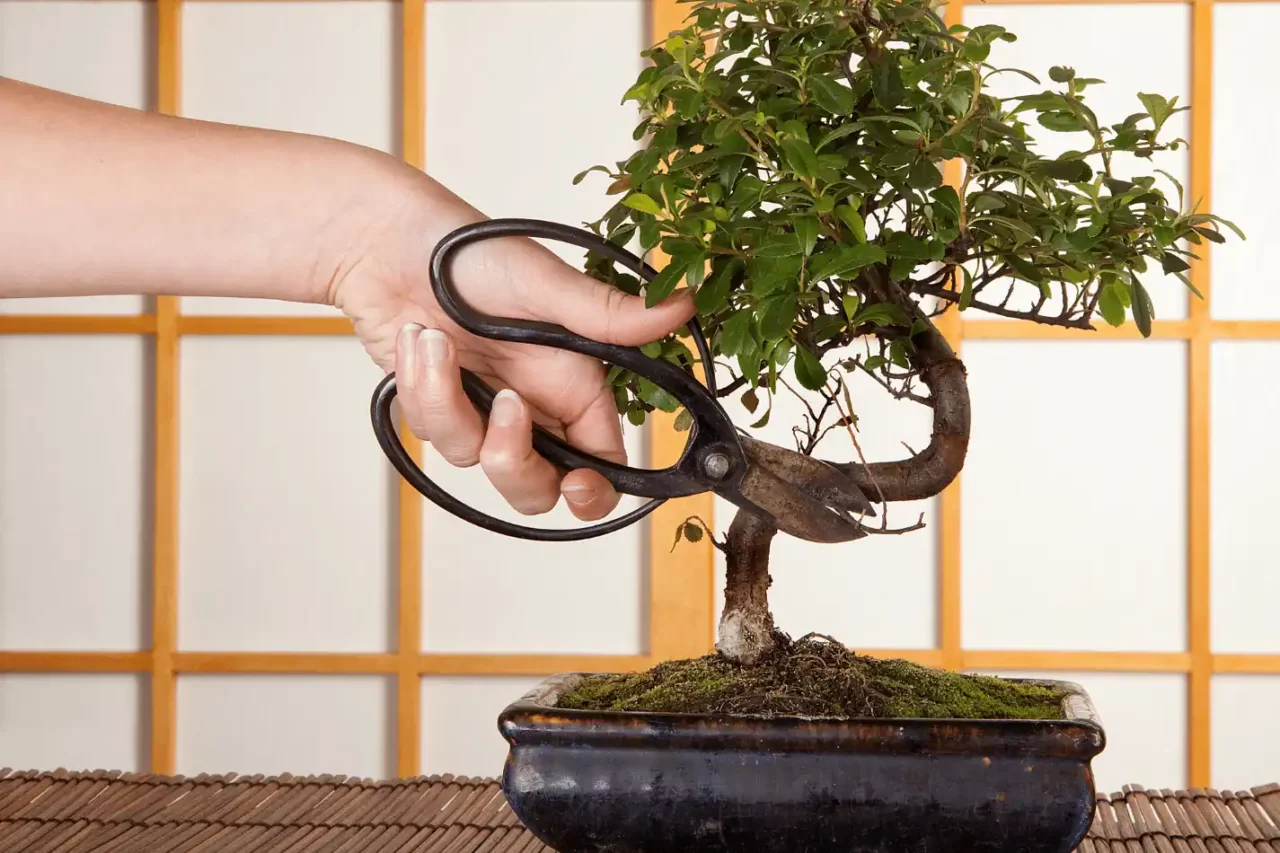
Maintenance and Care Tips
To ensure your bonsai shears remain in peak condition, it’s crucial to clean the blades after every use, effectively preventing sap buildup and corrosion.
Keeping them sharp isn’t just a matter of quality bonsai trimming; it’s essential for the tree’s health, ensuring clean cuts that heal faster and reduce stress.
Regularly lubricating the pivot point with oil is a must for smooth operation, significantly extending the lifespan of your shears.
Store your shears in a dry place, away from moisture, to avoid rust and deterioration.
Always follow the manufacturer’s care instructions closely to maximize their performance and longevity.
Proper care ensures your bonsai shears are always ready for precise, stress-free trimming.
Selecting the Right Pair
When selecting the right pair of bonsai shears, you must evaluate the blade length, cutting capacity, and handle design for peak performance in your specific pruning tasks.
The sizes of bonsai dictate the necessity for a diverse bonsai tool set, ensuring you have the right pruning shear for each job.
A longer blade is crucial for shaping larger trees, while a smaller, more precise shear is essential for intricate work on miniature varieties.
High-quality steel is non-negotiable for maintaining sharpness and durability, pivotal in achieving clean cuts that promote healthy growth.
Remember, the right tool not only enhances your bonsai’s beauty but also grants you the freedom to express your creativity through pruning.
Choose wisely to nurture your bonsai with precision and care.
Conclusion
In conclusion, selecting the right bonsai shears is crucial for your bonsai’s health and beauty. You’ve learned about different types, the significance of size for precision pruning, and the pros and cons of stainless steel versus carbon steel.
Remember, maintaining your shears through regular cleaning and sharpening extends their life and ensures clean cuts. Invest time in choosing the right pair, considering their specific use, material, and size, to enhance your bonsai shaping experience with expert precision and care.


